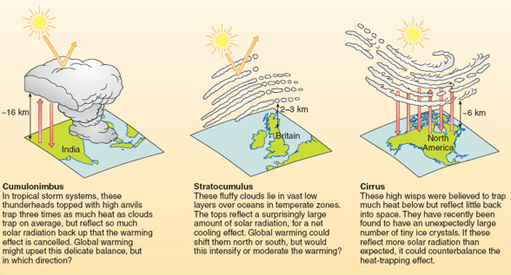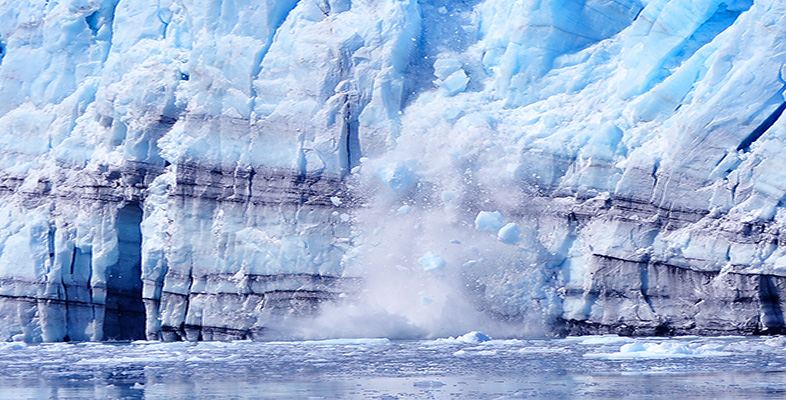1.3.3 The role of clouds
We have already identified one role that clouds play in the Earth's climate: they are highly reflective (Section 1.2.1). At any given time, about half of our planet is covered by clouds; the sunlight they reflect back to space accounts for about 55% of the total planetary albedo. However, clouds also absorb and re-emit outgoing longwave radiation; i.e. they contribute to the back radiation from the atmosphere, and hence to the natural greenhouse effect. This is why temperatures tend to be lower under clear night skies than on nights with extensive cloud cover.
Thus, clouds present something of a paradox: they both warm and cool the Earth. The balance between these two opposing effects is a delicate one - dependent on factors such as the type and thickness of the clouds, their altitude, whether they consist of water droplets or ice crystals, and so on (Figure 10). Averaged over time and around the world, satellite data indicate that the net effect of clouds in our current climate is a slight cooling of the surface. As you will see, predicting how the balance between warming and cooling might shift in a warmer world remains one of the biggest headaches for climate scientists.

